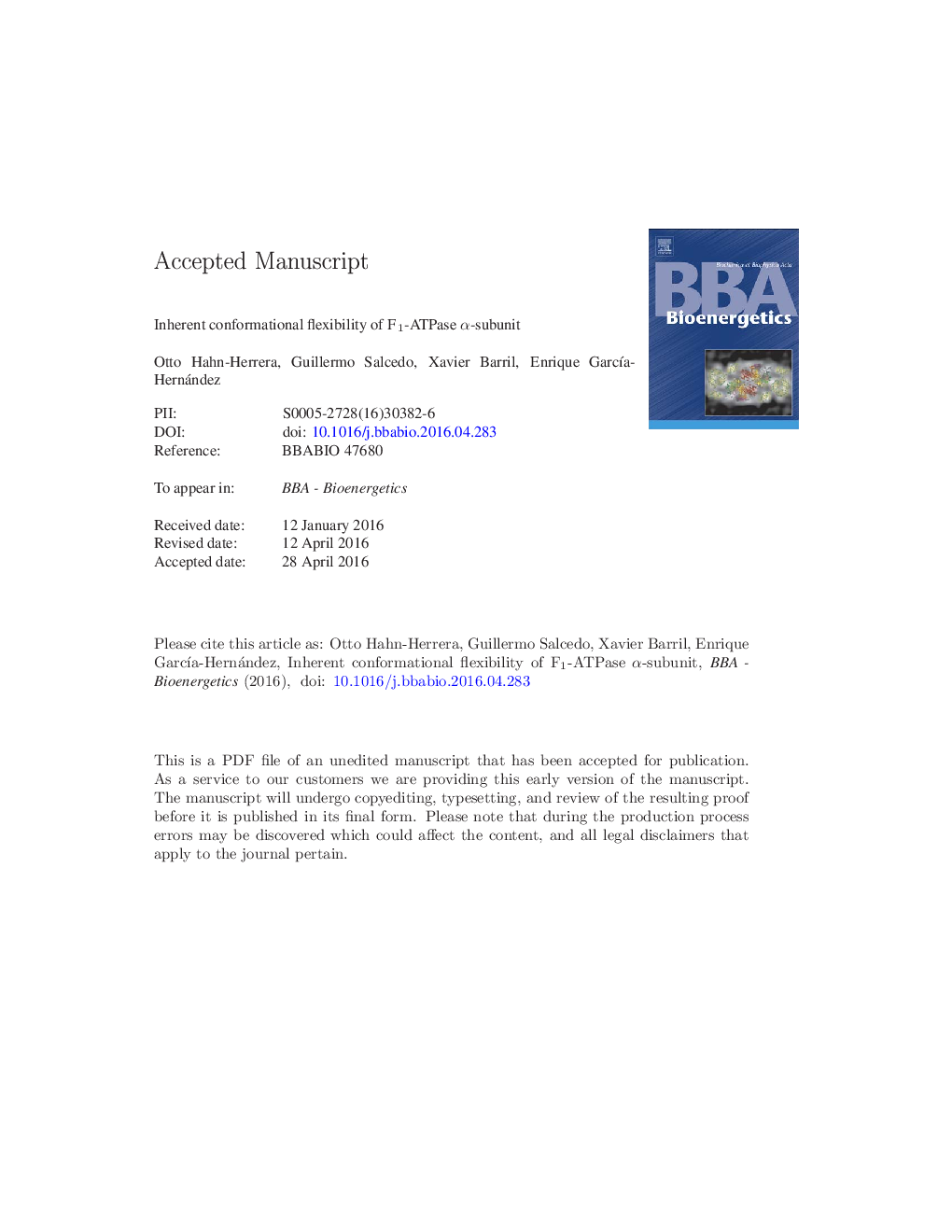| Article ID | Journal | Published Year | Pages | File Type |
|---|---|---|---|---|
| 10795230 | Biochimica et Biophysica Acta (BBA) - Bioenergetics | 2016 | 34 Pages |
Abstract
The core of F1-ATPase consists of three catalytic (β) and three noncatalytic (α) subunits, forming a hexameric ring in alternating positions. A wealth of experimental and theoretical data has provided a detailed picture of the complex role played by catalytic subunits. Although major conformational changes have only been seen in β-subunits, it is clear that α-subunits have to respond to these changes in order to be able to transmit information during the rotary mechanism. However, the conformational behavior of α-subunits has not been explored in detail. Here, we have combined unbiased molecular dynamics (MD) simulations and calorimetrically measured thermodynamic signatures to investigate the conformational flexibility of isolated α-subunits, as a step toward deepening our understanding of its function inside the α3β3 ring. The simulations indicate that the open-to-closed conformational transition of the α-subunit is essentially barrierless, which is ideal to accompany and transmit the movement of the catalytic subunits. Calorimetric measurements of the recombinant α-subunit from Geobacillus kaustophilus indicate that the isolated subunit undergoes no significant conformational changes upon nucleotide binding. Simulations confirm that the nucleotide-free and nucleotide-bound subunits show average conformations similar to that observed in the F1 crystal structure, but they reveal an increased conformational flexibility of the isolated α-subunit upon MgATP binding, which might explain the evolutionary conserved capacity of α-subunits to recognize nucleotides with considerable strength. Furthermore, we elucidate the different dependencies that α- and β-subunits show on Mg(II) for recognizing ATP.
Keywords
ΔHbBinding enthalpyFoF1-ATP synthaseMg(II)MgCl2TRISRMSDRMSFADPITC2-amino-2-(hydroxymethyl)propane-1,3-dioladenosine 5′-triphosphateadenosine 5′-triphosphataseadenosine 5′-diphosphateATPEDTAEthylenediaminetetraacetic acidroot-mean-square deviationConformational flexibilityATPaseEquilibrium binding constantMolecular dynamicsMolecular dynamics simulationroot mean square fluctuationIsothermal titration calorimetryMagnesium chloride
Related Topics
Life Sciences
Agricultural and Biological Sciences
Plant Science
Authors
Otto Hahn-Herrera, Guillermo Salcedo, Xavier Barril, Enrique GarcÃa-Hernández,
